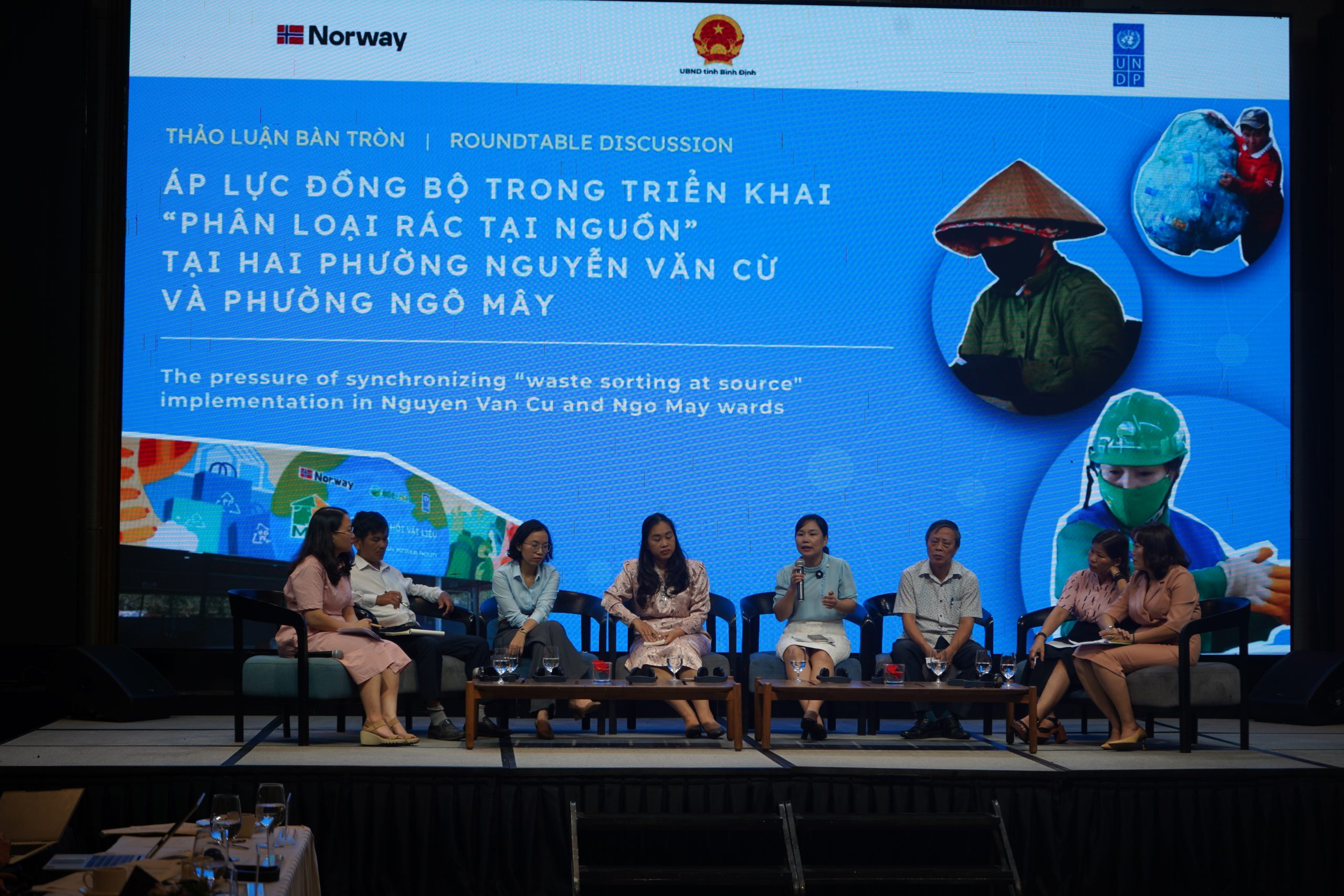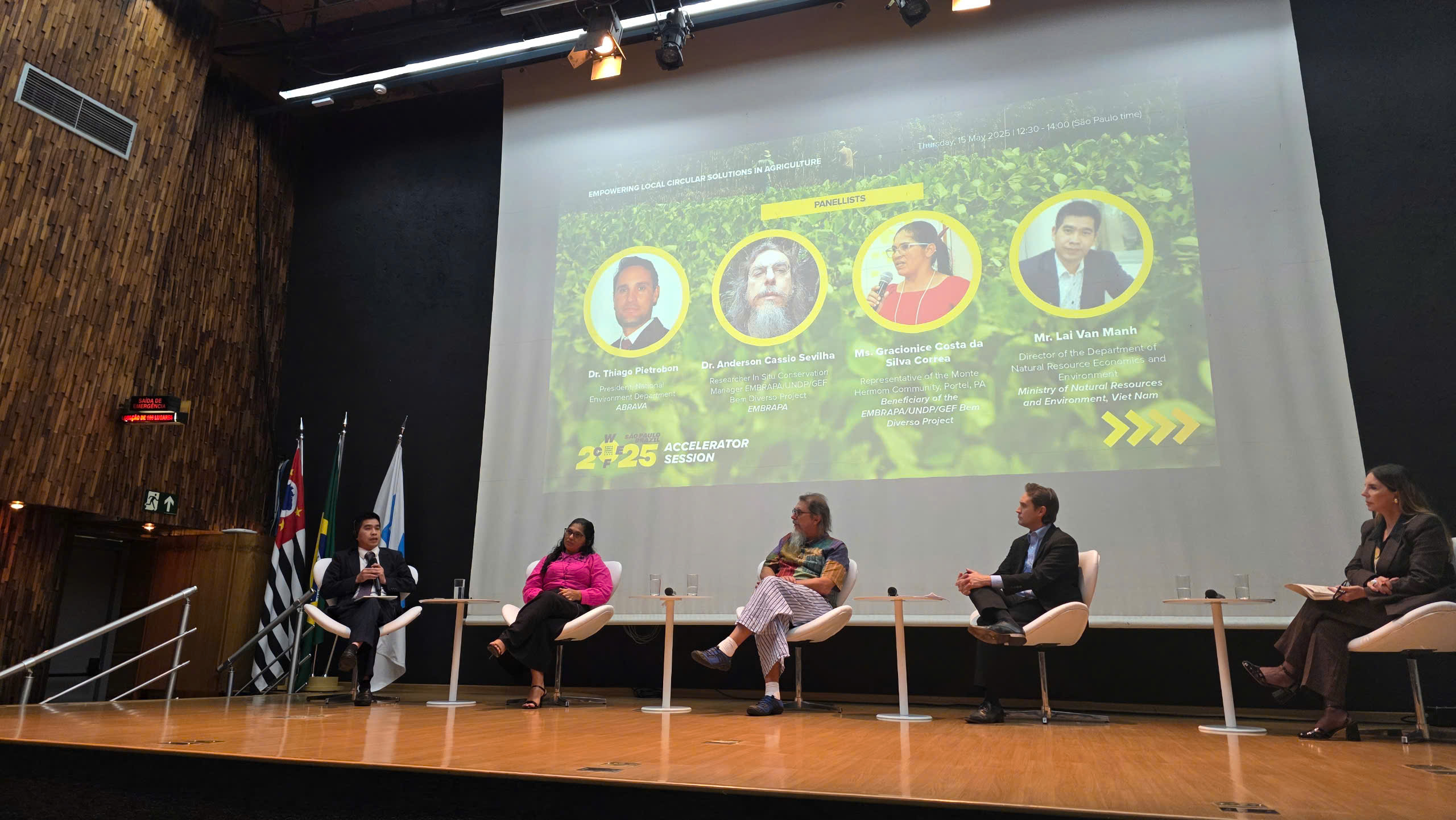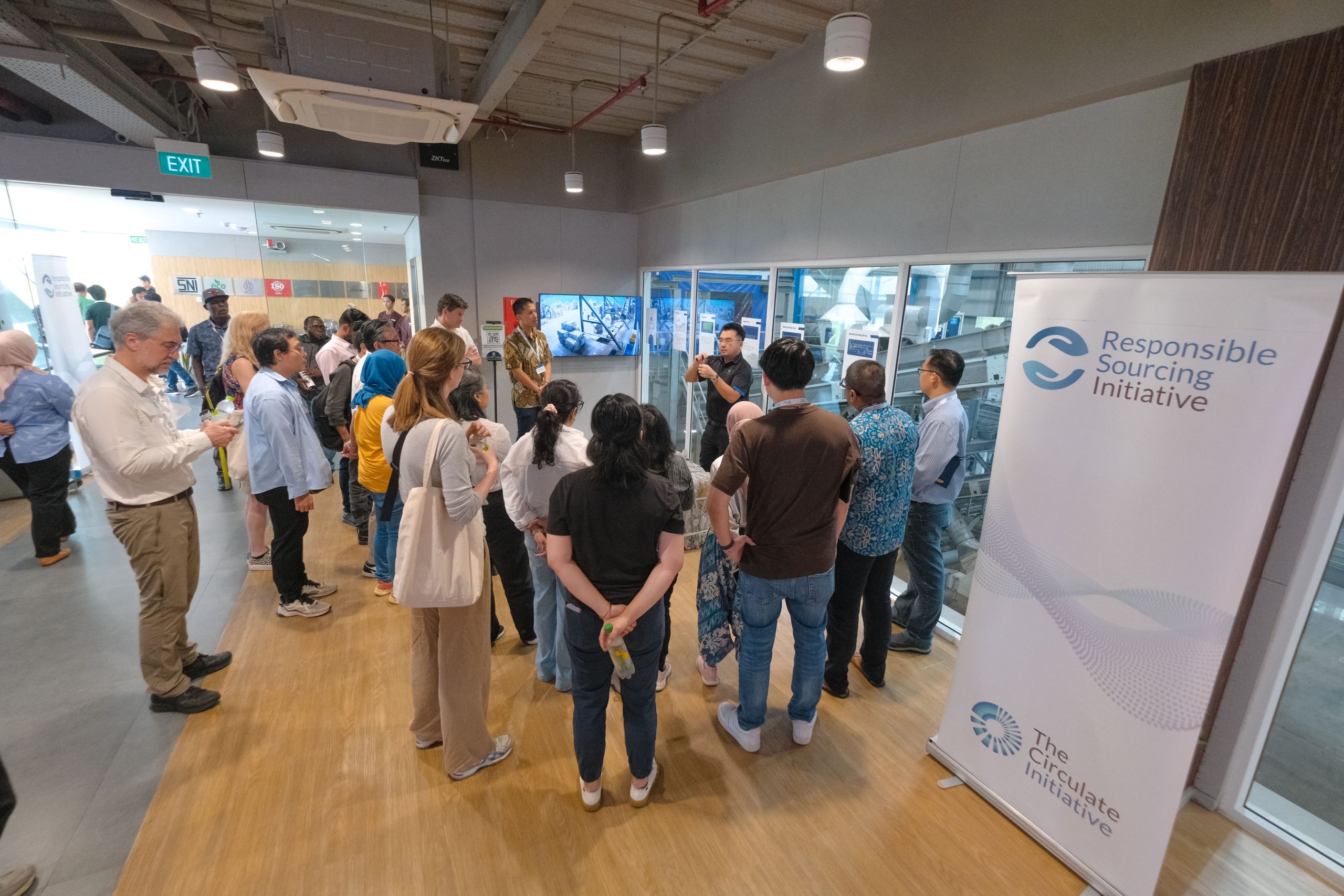
Van Trung Industrial Park (Bac Giang). Illustration: Danh Lam/VNA
It can be seen that the implementation of sustainable development criteria along with experiences through the COVID-19 epidemic have created strong “antibodies” for businesses to continue to maintain and accelerate in the coming time.
On the eve of the Viet Nam Sustainable Business Forum (VCSF) and the Announcement Ceremony of Viet Nam Sustainable Enterprises (CSI) 2021 taking place tomorrow (December 9), the VNA reporter had a talk Nguyen Quang Vinh, General Secretary of the Viet Nam Chamber of Commerce and Industry (VCCI) cum Vice President – General Secretary of the Viet Nam Business Council for Sustainable Development (VBCSD) a number of related contents. to the circular economy and corporate governance.
The concept of circular economy has been widely communicated in recent years and many circular economic models have been deployed, creating positive effects. How do you evaluate the importance of this model and the value it brings?
The circular economy appeared in Viet Nam 20 years ago with different designations. It could be the VAC model (garden – pond – barn), a model that our agricultural country at that time applied quite successfully. There is also the concept of “eco-industrial park”, “cleaner production”, “zero emissions” or recycling, reuse, remanufacturing… – part of the circular economy – is also mentioned recently. However, they can be considered as discrete, alternating and unsystematic concepts. The circular economy offers a new systematic thinking perspective on the use of raw materials in a way that is more efficient, more economical, longer life cycle, higher value than the traditional way.
According to a study by the World Business Council for Sustainable Development (WBCSD), the application of circular economic models will help create at least $7.7 trillion in market opportunities by 2030 for businesses. and more than 380 million new job opportunities, while maintaining the sustainable growth momentum of the global economy.
Building a circular economy has also been identified as one of the country’s development orientations for the period 2021-2030 in the Document of the 13th National Congress of the Party and included in the Environmental Law in 2020. This is an effort to build a legal corridor and an institutional framework to promote the application of circular economic models in Viet Nam.
The circular economy has been put into operation programs by VBCSD and VCCI since 2016 and has become a topic of discussion at forums and conferences on sustainable development held annually. This is to raise awareness and strengthen the exchange and sharing of the Government, ministries, sectors, experts and the business community.
In January 2018, VBCSD and VCCI officially launched the “Initiative to support enterprises in implementing the circular economy model in Viet Nam”. This is an effort to pioneer in enhancing the competitiveness of the private sector, further promoting the participation of businesses to build a zero-emissions economy.
In 2020, VBCSD and VCCI proposed to the Prime Minister on the development and implementation of a national program to support the business community in implementing the circular economy model in the 2021 – 2025 period. Along with that, integrating actively coordinate with members, domestic and international partners to implement projects and initiatives such as the “zero discharge into nature” initiative to reduce plastic waste and build a sustainable business model sustainable in the direction of circular economy. Initiative “building secondary raw materials market”; conducting studies on the readiness to participate in the circular economy model in the paper and plastic industry; training for businesses and media agencies on the circular economy model;…
Recently, in October 2021, VBCSD announced the results of a study to assess the current situation and potential of the circular economy of the fast-moving consumer goods industry in Viet Nam, focusing on the food and non-alcoholic beverages sector. Accordingly, VBCSD surveyed over 100 medium and large enterprises in the field of manufacturing, processing raw materials and products of 9 product groups in the food and non-alcoholic beverage industry. Research results show that 90% of surveyed businesses have converted to a circular economy model at different levels, focusing on prioritizing the use of raw materials and infrastructure, packaging use .
Implementing Resolution 136/NQ-CP of the Government on sustainable development, VBCSD and VCCI continue to effectively implement activities to support initiatives to promote businesses to implement models of sustainable development, business circular economy. At the same time, promoting the assessment of businesses for sustainable development based on the Sustainability Enterprise Index (CSI); at the same time, about to announce the list of 100 sustainable businesses in 2021.
So is there any solution to promote circular economy models, more widely in small and medium enterprises, which are always considered weak areas of awareness and lack of potential?
In the current context, when the circular economy has become a global trend and is the future of businesses, any business that captures this trend and moves to integrate itself will maintaining and promoting its position and affirming the brand name in the value chain.
In Viet Nam, it is not easy to replicate these models and create widespread movements in small, medium or micro enterprises. Especially when the circular economy has not been legalized, it has not become mandatory regulations or conditions that businesses need to fulfill when starting a business.
In addition, there have not been any specific and detailed mechanisms on incentives and favorable conditions for businesses in terms of land access, credit or taxes and fees, etc. Thereby, creating incentives to encourage enterprises and motivate businesses to invest and deploy a circular economy model or transform chains and operating processes towards the goal of environmental protection and sustainable development.
However, if they are in the supply chain of enterprises that have obtained the certificate of Sustainable Development, then any supplier of any size cannot fail to comply with the provisions of the CSI Index on enterprise management. This is the rule of elimination and the choice of change to survive and develop lies at the enterprise’s own decision.
Viet Nam Sustainable Business Forum (VCSF) and Viet Nam Sustainable Enterprises Announcement Ceremony (CSI) 2021 will open on the morning of December 9. What’s new in this year’s event, sir?
This year’s program will honor businesses with a good track record in respecting and promoting children’s rights in business and their commitment to gender equality in the workplace. These are all contents that the world business community is very interested in, demonstrating the vision of “leaving no one behind” in the corporate culture of sustainable business and the mission to implement the United Nations’ millennium goals.
The most important mark of this year’s 6th edition of the CSI Index is the classification of the indexes into 3 levels for different business sizes. The M-sign index is for micro and small businesses. Symbol Index C (basic index) for medium and large enterprises, and Symbol Index A (advanced index) show that businesses in addition to complying with the law have also built an ecosystem healthy business, ensuring sustainable business benefits for partners and other stakeholders.
Through this decentralization, once again, VBCSD wishes to convey the message that “sustainable development” is not a far-fetched, big deal only for large enterprises, but very practical and can be achieved through the good implementation of legal provisions and civilized behavior in production and business activities of each enterprise regardless of size or field of operation.
Instead of spending a lot of effort researching the “matrix” of information on their own, businesses can envision a roadmap for implementing sustainable development on a small to large scale. From there, building strategies and business plans in line with current capacity and future orientation. This helps businesses, especially small and medium enterprises, save a lot of time and resources in corporate governance towards sustainable development.
Ngoc Quynh/VNA
















